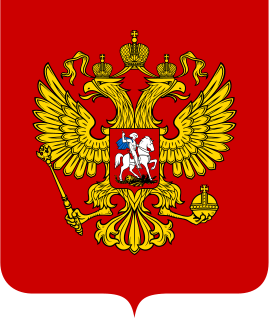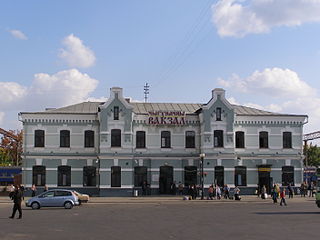This article does not cite any sources .(May 2018) (Learn how and when to remove this template message) |
A territorial entity is an entity that covers a part of the surface of the Earth with specified borders.
This article does not cite any sources .(May 2018) (Learn how and when to remove this template message) |
A territorial entity is an entity that covers a part of the surface of the Earth with specified borders.
Established by a non-physical act, such as a law, order, decree, for administrative tasks. Can include political entities with their own government, but also statistical regions or reserves.
Established by physical acts, e.g. settlement, see List of uninhabited regions.
| This article about geography terminology is a stub. You can help Wikipedia by expanding it. |

An administrative division, unit, entity, area or region, also referred to as a subnational entity, constituent unit, or country subdivision, is a portion of a country or other region delineated for the purpose of administration. Administrative divisions are granted a certain degree of autonomy and are usually required to manage themselves through their own local governments. Countries are divided up into these smaller units to make managing their land and the affairs of their people easier. A country may be divided into provinces, states, counties, cantons or other sub-units, which, in turn, may be divided in whole or in part into municipalities, counties or others.

A county is a geographical region of a country used for administrative or other purposes, in certain modern nations. The term is derived from the Old French conté or cunté denoting a jurisdiction under the sovereignty of a count (earl) or a viscount. Literal equivalents in other languages, derived from the equivalent of "count", are now seldom used officially, including comté, contea, contado, comtat, condado, Grafschaft, graafschap, and zhupa in Slavic languages; terms equivalent to English language administrative terms like municipality, district, circuit and commune/community are now often instead used.
In geography, regions are areas that are broadly divided by physical characteristics, human impact characteristics, and the interaction of humanity and the environment. Geographic regions and sub-regions are mostly described by their imprecisely defined, and sometimes transitory boundaries, except in human geography, where jurisdiction areas such as national borders are defined in law.

Russia is divided into several types and levels of subdivisions.

The administrative divisions of France are concerned with the institutional and territorial organization of French territory. These territories are located in many parts of the world. There are many administrative divisions, which may have political, electoral (districts), or administrative objectives. All the inhabited territories are represented in the National Assembly, Senate and Economic and Social Council and their citizens have French citizenship.

Minsk Region or Minsk Oblast or Minsk Voblasts is one of the regions of Belarus. Its administrative center is Minsk, although it is a separate administrative territorial entity of Belarus. As of 2011, the region's population is 1,411,500.

Administratively, Portugal is de jure unitary and decentralized state. Nonetheless, operationally, it is highly centralized system with administrative divisions organized into three tiers. The State is organized under the principles of subsidiarity, local government autonomy, and democratic decentralization of the public service.
Nomenclature of Territorial Units for Statistics or NUTS is a geocode standard for referencing the subdivisions of countries for statistical purposes. The standard, adopted in 2003, is developed and regulated by the European Union, and thus only covers the member states of the EU in detail. The Nomenclature of Territorial Units for Statistics is instrumental in the European Union's Structural Funds and Cohesion Fund delivery mechanisms and for locating the area where goods and services subject to European public procurement legislation are to be delivered.

Zlín Region is an administrative unit of the Czech Republic, located in the south-eastern part of the historical region of Moravia. It is named after its capital Zlín. Together with the Olomouc Region it forms a cohesion area of Central Moravia. It is located in the eastern part of the Czech Republic, where the borders with Slovakia are formed by its eastern edge. It borders the South Moravian Region in the southwest, the Olomouc Region in the northwest and the Moravian-Silesian Region in the north. Culturally, the region is composed of parts of three traditional Moravian regions: Hanakia, the Moravian Slovakia and the Moravian Wallachia, as the city of Zlín lies roughly at their tripoint.

Since 1949, Slovakia has been divided into a number of kraje. Their number, borders and functions have been changed several times. There are currently eight regions of Slovakia and they correspond to the EU's NUTS 3 level of local administrative units. Each kraj consists of okresy. There are currently 79 districts.

An oblast, in English referred to as a region, refers to one of Ukraine's 24 primary administrative units. Ukraine is a unitary state, thus the regions do not have much legal scope of competence other than that which is established in the Ukrainian Constitution and by law. Articles 140–146 of Chapter XI of the constitution deal directly with local authorities and their competency.

Hajigabul is one of the districts of Azerbaijan established in 1990 by the decision of the Supreme Council of the Republic. The district is bordered by Absheron, Gobustan, Shamaxı, Aghsu, Kurdamir, Sabirabad, Salyan, and Shirvan city.

Khachmaz is one of administrative divisions of Azerbaijan. It is about 10 km from the Caspian Sea, below Khudat, and to the east of Quba. Khachmaz is 170 kilometres north of the capital Baku. The Khachmaz rayon borders the Republic of Dagestan of the Russian Federation.The villages of Uryanoba and Kharakhoba were exclaves belonging to Russian Federation, Republic of Dagestan.

Babek or Babak is a rayon of Azerbaijan in the Nakhchivan Autonomous Republic. It was formerly known as Nakhchivan District. The district named in honour of Babak Khorramdin, an Iranian who led a 23-year-long uprising against the Abbasid Caliphate in Iranian Azerbaijan.

An autonomous administrative division is a subdivision or dependent territory of a sovereign state that has a degree of autonomy — self-governance — from an external authority. Autonomous areas are distinct from the constituent units of a federation in that they possess unique powers for their given circumstances. Typically, it is either geographically distinct from the rest of the state or populated by a national minority. Decentralization of self-governing powers and functions to such divisions is a way for a national government to try to increase democratic participation or administrative efficiency or to defuse internal conflicts. States that include autonomous areas may be federacies, federations, or confederations. Autonomous areas can be divided into territorial autonomies, subregional territorial autonomies, and local autonomies.
The Structural Funds and the Cohesion Fund are financial tools set up to implement the regional policy of the European Union. They aim to reduce regional disparities in income, wealth and opportunities. Europe's poorer regions receive most of the support, but all European regions are eligible for funding under the policy's various funds and programmes. The current Regional Policy framework is set for a period of seven years, from 2014 to 2020.

Romania's administration is relatively centralized and administrative subdivisions are therefore fairly simplified.
A cross-border region is a territorial entity that is made of several local or regional authorities that are co-located yet belong to different nation states. Cross-border regions exist to take advantage of geographical conditions to strengthen their competitiveness.

The statistical regions of Serbia are regulated by the Law of the Regional Development and the Law of the Official Statistics. Serbia is divided into five statistical regions which are chiefly used for statistical purposes, such as census data. The regions encompass one or multiple districts each.

The political division of the Kingdom of Spain is defined in Part VIII of the Spanish constitution of 1978, which establishes three levels of territorial organization: municipalities, provinces and autonomous communities, the first group constituting the subdivisions of the second, and the second group constituting the subdivisions of the last. The State guarantees the realization of the principle of solidarity by endeavouring to establish an economic balance between the different areas of the Spanish territory.